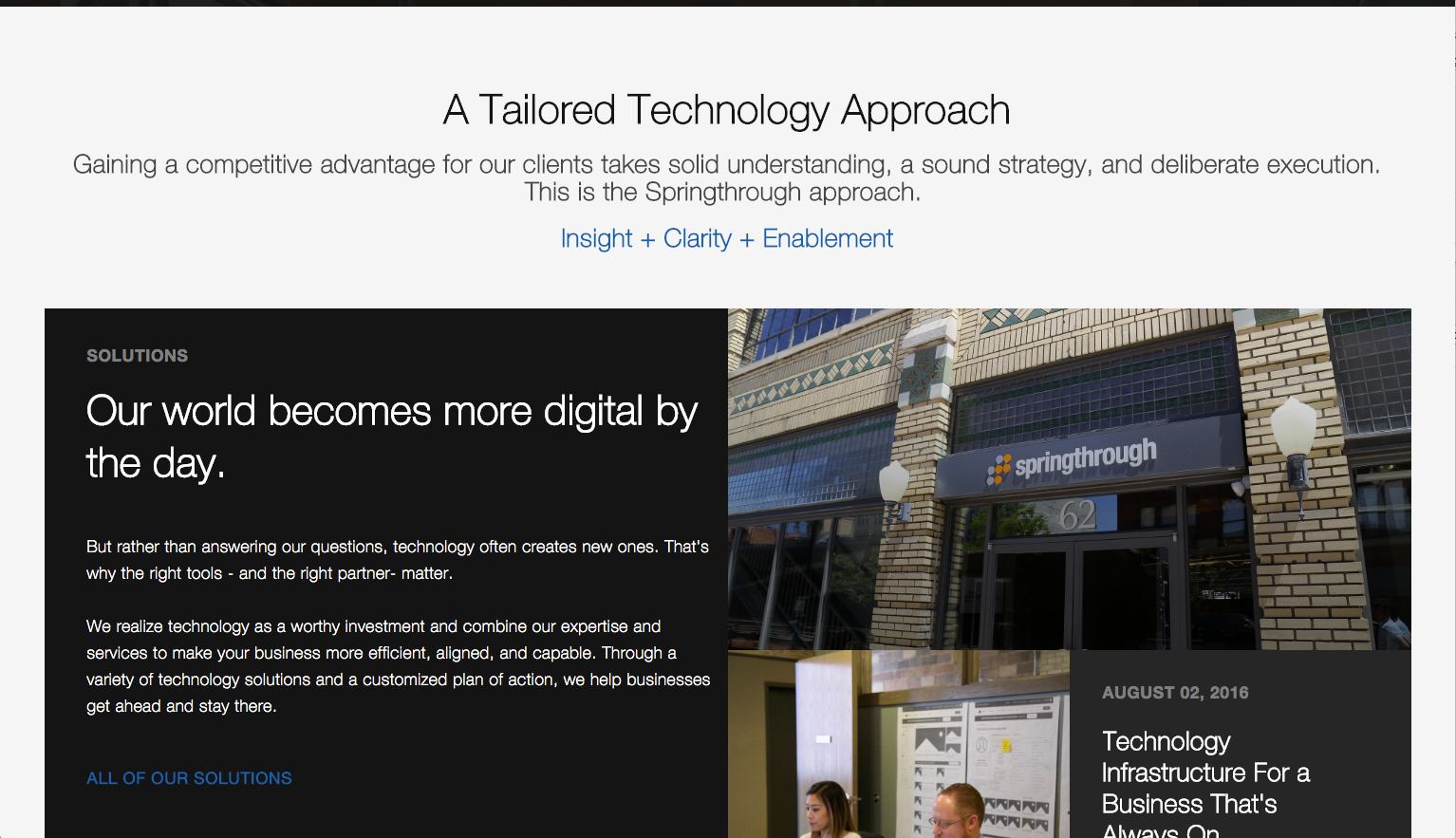Since I started at Springthrough a little more than a year ago, the firm’s website has been a topic of discussion. My suspicion is that even before I began, people were tossing around the idea of a new site. It seems pretty common to be most critical of your own website.
Topics: Development Trends, Sitefinity Development & Enterprise Web
What is Angular?
Angular is a JavaScript framework that solves a problem that most people, even developers, didn’t realize they had on their websites. Workload distribution.
Topics: Development Trends
The Integration of Systems: HubSpot and Sitefinity Development
It’s not uncommon for a client to request a custom integration between their existing software and any new systems they plan to implement. I’ve seen (and built) integrations with SAP, Salesforce, legacy applications, and many others. In the case of website development (something we do frequently at Springthrough), connecting a content management system with other platforms can take a website from a marketing brochure to an actual tool.
Topics: Development Trends
You Can Use Slack To Be More Productive, Even in Pokémon Go
I’m going to avoid the explanation and assume that you’ve heard of Pokémon Go. Since its release a couple weeks ago the mobile gaming app has been one of the main news features of the month. Writers discuss what it says about our culture, why it gained popularity so quickly, what other businesses can learn from it, and more.
Topics: Development Trends
Cloud Computing: Benefits and Risks To Help You Decide
It’s only growing – in popularity, in offerings, even into pop culture. In almost every new project I start, the client mentions cloud hosting from services like Amazon Web Services (AWS) and Microsoft Azure. In January, a survey of more than 1000 IT professionals showed increased adoption and changing perspectives of cloud computing benefits and risks. I would guess that anyone in an Infrastructure decision-making role has researched the possibilities. But in reality, making the move from internal hosting to Infrastructure as a Service is often a difficult step.





